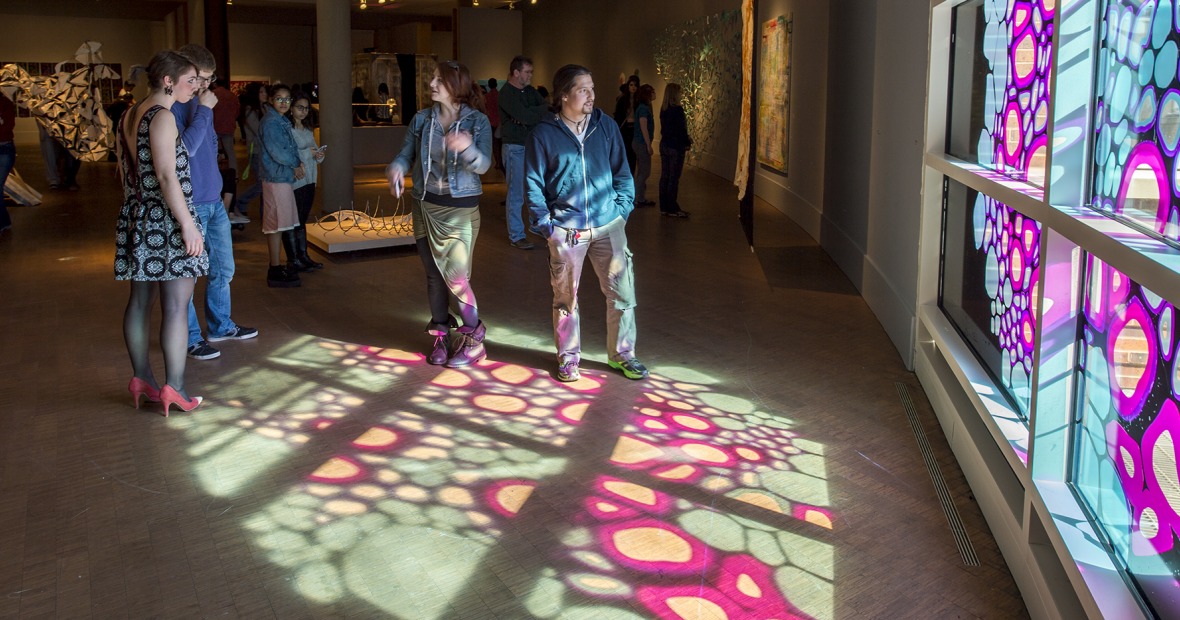Gallery + Students = Alternative Classroom
The Faulconer Gallery’s thought-provoking art exhibitions benefit more than the casual visitor. Students in courses across science, social studies, and humanities disciplines find that the Faulconer is more than just an art gallery — it’s an extension of the classroom.
Gallery as biology lab
“One of the reasons I do art that incorporates biology is the wonder aspect,” says Becky Garner ’15, who took Professor Jackie Brown’s History of Biology course.
Brown has long been interested in the intersection between art and science. Last year he incorporated From Wunderkammer to the Modern Museum, 1606-1884, a Faulconer Gallery exhibition of books documenting cabinets of curiosity, into his History of Biology course. The exhibition demonstrated the change in scientific thinking over the course of nearly 300 years. Connected to the exhibition, there was a panel discussion of the role of wonder in scientific inquiry.
Brown has also incorporated the gallery into his First-Year Tutorial. “Lesley Wright, director of the gallery, leads a close looking exercise,” says Brown. It’s a way of teaching students how to examine things closely without going as far as interpretation. Brown’s tutorial performs the exercise in different settings ranging from looking at an animal to looking at art.
Gallery as race and gender studies classroom
Last year, Professor Michael Gill incorporated a student-curated exhibition, Decay: The Ephemeral Body in Art, into his Feminist and Queer Disability Studies course. This year, he structured an advanced special topic course on masculinity around an exhibition at the gallery, Gordon Parks: The Making of an Argument. This exhibition showed how Time magazine shaped a photo essay by Parks to fit a particular narrative of black masculinity.
“The cropping and lighting choices made a specific judgment of Red Jackson, the subject of the photo essay, and flattened his expression of gender for a white audience,” says Gill. Gill’s students responded to the exhibition by creating their own as a final project for the class.
Gallery as education seminar
Professor Kathryn Wegner took her students to both the Faulconer Gallery and the gallery in Burling Library to view two Chicago-related exhibitions. Students reacted to the narrative construction of Gordon Parks: The Making of an Argument and spent time studying Sandra Steinbrecher’s The Education Project Photo Exhibition. The latter was a photographic study of three struggling Chicago high schools. In addition to images and stories of teachers and students, it also profiled journalists, activists, and politicians. Wegner constructed the syllabus for her course on education reform around both the Steinbrecher exhibition and a number of speakers brought to campus by a Rosenfield symposium.
“We are always seeking ways to make works in our collection and in the gallery a dynamic part of the learning process,” says Wright. “And we work with artists, critics, and scholars — as well as faculty and other on-campus experts — to create a richer context for our exhibitions.”

